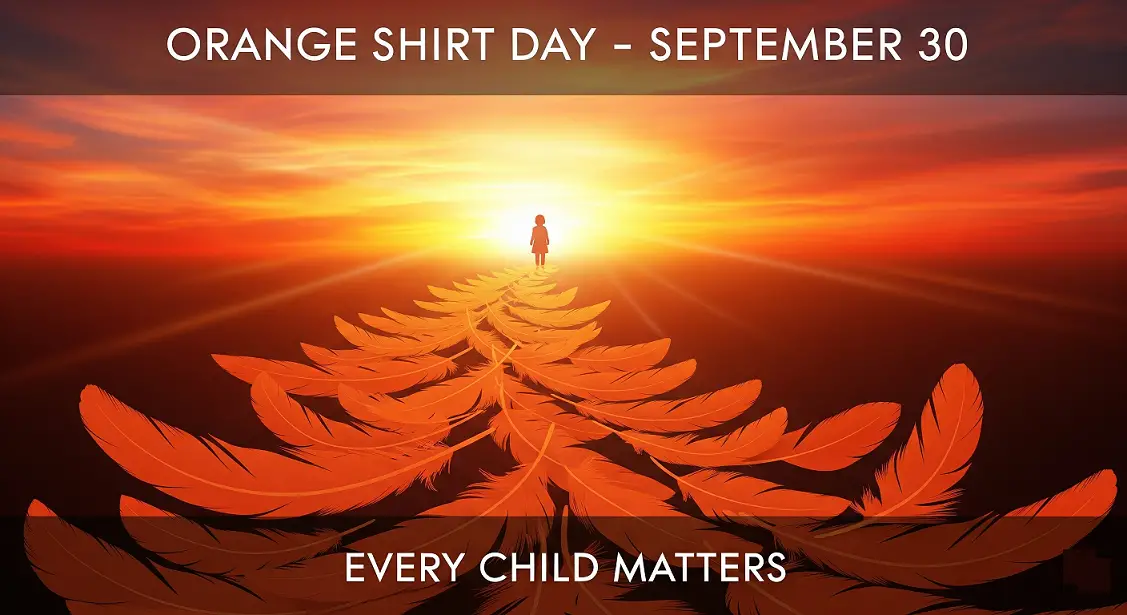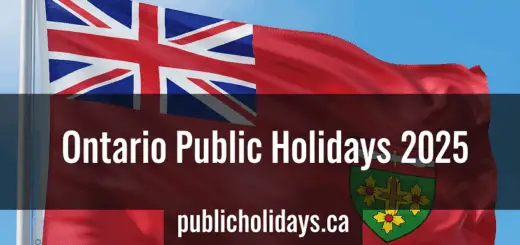Orange Shirt Day
Orange Shirt Day: History, Meaning, and How to Observe with Respect

Observed on September 30, Orange Shirt Day is a time of remembrance and learning that centers the experiences of Indigenous children who were taken from their families and placed in residential schools. The day carries the message
“Every Child Matters.”
Residential Schools
Truth & Reconciliation
Indigenous History
September 30
What Is Orange Shirt Day?
Orange Shirt Day is an annual day of remembrance and education that acknowledges the legacy of residential schools and honors Survivors, their families, and their communities.
The orange shirt has become a symbol of the stripping away of culture, freedom, and
self-esteem experienced by Indigenous children across what is now Canada. The message
“Every Child Matters” emphasizes the inherent dignity and worth of every child,
and calls for meaningful action toward truth, reconciliation, and justice.
The Origin: Phyllis Webstad’s Story
Orange Shirt Day grew from the experience of Phyllis (Jack) Webstad, a Northern Secwépemc(Shuswap) woman. As a six-year-old, Phyllis arrived for her first day at a residential school wearing a bright orange shirt her grandmother had bought for her. On arrival, the shirt was taken away and never returned. That loss — of a cherished item and of autonomy — became symbolic of the wider experiences of hundreds of thousands of Indigenous children who attended residential schools for over a century.
The color orange, therefore, is a reminder of how children’s identities and connections to family, language, and culture were suppressed in these institutions. Phyllis shared her story publicly as an adult, inspiring a grassroots movement that now includes schools, workplaces, communities, and institutions across the country and beyond.
Historical Context: Residential Schools
Residential schools were government-funded, church-run institutions that forcibly removed many First Nations, Inuit, and Métis children from their families and communities. The stated goal was cultural assimilation. Survivors have shared accounts of neglect, abuse, loss of language and culture, and separation from family and land. The intergenerational impacts are profound and continue today.
Truth-telling, documentation, and Survivor testimony have been vital in making this history more widely known. Commemoration days like Orange Shirt Day are part of the broader work of listening, learning, and supporting healing.
September 30: National Day for Truth and Reconciliation
In addition to Orange Shirt Day, September 30 is also recognized in Canada as the National Day for Truth and Reconciliation, a federal statutory day of remembrance and reflection. Many people observe both together: wearing orange, attending community events, engaging with educational materials, and taking time to reflect on the past and the responsibilities of the present.
How to Observe Respectfully
Learn & Listen
- Read Survivor accounts and reports that document residential school history.
- Attend talks, screenings, or local gatherings organized with Indigenous leadership.
- Engage with books, podcasts, and curriculum created by Indigenous authors and educators.
Wear Orange with Meaning
- Wear an orange shirt that centers the message Every Child Matters.
- When possible, purchase from Indigenous creators or organizations supporting Survivors.
- Pair the shirt with action: learning, donating, volunteering, and sharing credible resources.
Support & Donate
- Support community-led initiatives, healing centers, and education programs.
- Consider ongoing donations rather than one-day giving to sustain long-term work.
Reflect & Act
- Set aside time for quiet reflection or a team conversation with prepared prompts.
- Identify concrete steps your school, workplace, or organization can take year-round.
knowledge keepers and facilitators. Build relationships, not just programs.
Ideas for Classrooms & Campuses
- Begin with an age-appropriate overview that centers Survivor voices and encourages empathy.
- Explore Indigenous languages and the importance of language revitalization.
- Integrate art projects (posters, poetry, beadwork) that reflect the message Every Child Matters.
- Create a book list featuring Indigenous authors across grades and subjects.
- Host a talking circle facilitated by an experienced educator or community member.
Workplace Guidance
- Offer educational sessions led by qualified facilitators; compensate speakers fairly.
- Provide paid time for employees to attend community events or learning activities.
- Review policies with an equity and reconciliation lens; identify gaps and next steps.
- Source orange shirts and materials from Indigenous vendors where possible.
Frequently Asked Questions
Why the color orange?
Orange recalls the new shirt Phyllis Webstad wore on her first day at a residential school — taken from her on arrival. The color symbolizes the loss experienced by children and the commitment to ensure every child is valued and protected.
Is Orange Shirt Day the same as the National Day for Truth and Reconciliation?
They occur on the same date and are often observed together. Orange Shirt Day is a grassroots remembrance initiative, while the National Day for Truth and Reconciliation is a federal day of remembrance and reflection.
How can non-Indigenous people participate respectfully?
Center Survivor voices, learn from credible sources, attend community-led events, support Indigenous initiatives, and pair symbolic actions (like wearing orange) with ongoing learning and concrete support.
What does “Every Child Matters” mean?
It affirms the inherent worth and rights of every child and calls for safe, loving, culturally grounded environments where children, families, and communities can thrive.
Language & Respect
- Use capitalized terms like Indigenous, First Nations, Inuit, and Métis.
- When speaking about people who attended these institutions, use Survivors unless someone identifies differently.
- Avoid minimizing language; acknowledge harms clearly and focus on listening and learning.
Learning Resources
Look for resources created by Indigenous Survivors, scholars, and organizations, including educational guides, storytelling projects, and curricula. Local friendship centres, cultural organizations, and libraries often host talks, film screenings, and community events around September 30.
Closing Reflection
Orange Shirt Day asks us to remember, to learn, and to act. Wearing orange is a start; sustained effort is the commitment. When we listen to Survivors, support community-led healing, and transform our institutions, we move closer to a future where every child — and every community — truly matters.




1 Response
[…] Orange Shirt Day […]